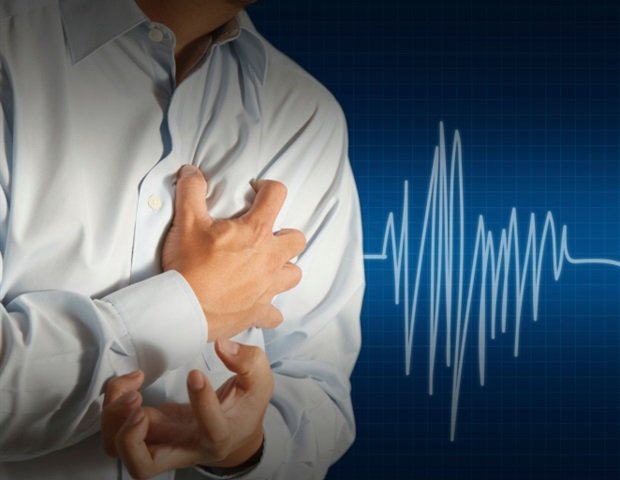
Experts at the University of Nottingham, in collaboration with experts at Keele University, have found that the risk of heart attacks and strokes temporarily increases in the four months after a gout flare.
The research showed that gout patients who suffered from a heart attack or stroke were twice as likely to have had a gout flare in the 60 days prior to the event, and one and a half times more likely to have a gout flare in the 61-120 days prior.
The results of the study, led by Professor Abhishek in the School of Medicine at the University of Nottingham, are published in the journal JAMA.
Gout is a common form of arthritis that affects one in 40 adults in the UK. It is caused by high levels of uric acid, a chemical produced by breakdown of tissues in the body and present in certain foods and drinks.
At high levels, uric acid is deposited in and around joints as needle shaped urate crystals. Once released from their deposits, these crystals cause severe inflammation manifesting as joint pain, swelling, redness, and tenderness that often lasts for 1-2 weeks. These episodes, called gout flares, often recur. Inflammation is also a risk factor for heart attack and stroke.
People with gout tend to have more cardiovascular risk factors, although there have been no previous studies about whether gout flares are linked with an increased risk of heart attack and stroke. In this study, the experts examined whether there was a temporary increase in risk of heart attack or stroke after a gout flare.
The team used anonymized data from 62,574 patients with gout treated in the National Health Service in the UK. Of these, 10,475 experienced heart attack or stroke after the diagnosis of gout, while others of similar age, sex, and duration of gout, did not experience such events. They evaluated the association between heart attacks or strokes and recent gout flares and adjusted these results for comorbidities, socioeconomic deprivation, lifestyle factors and prescribed medications among other things. They found that gout patients who suffered a heart attack or stroke were twice as likely to have had a gout flare in the 60 days prior to the event, and one and a half times more likely to have a gout flare in the preceding 61-120 days.
They found a similar high rate of heart attack or stroke in the 0-60 and 61-120 days after gout flares compared with other time periods, when they used information from only patients who consulted for a gout flare and also experienced either heart attack or stroke. This further strengthened the finding that gout flares are associated with a transient increase in cardiovascular events following flares. The increased odds and rates persisted when people with pre-existing heart disease or stroke before their gout diagnosis were excluded, and when shorter exposure periods such as 0-15 and 16-30 days prior to heart attack or stroke, were considered.
Gout patients who died from a heart attack or stroke had over four times the odds of experiencing a gout flare in the preceding 0-60 days and over twice the odds of gout flare in the preceding 61-120 days.
This is the first study of its kind to examine whether there is an association between recent gout flares and heart attacks and strokes.
The results show that among patients with gout, patients who experienced a heart attack or stroke had significantly increased odds of a gout flare during the preceding 120-days compared with patients who did not experience such events. These findings suggest that gout flares are associated with a transient increase in cardiovascular events following flares.
People with recurrent gout flares should be considered for long-term treatment with urate lowering treatments such as allopurinol. This is a reliable way of removing urate crystal deposits and providing freedom from gout flares. Patients should also be considered for concurrent treatment with anti-inflammatory medicines such as colchicine for the first few months because urate lowering treatments may trigger gout flares in the short term.
People with gout should be encouraged to adopt a healthy lifestyle with appropriate treatment of conditions such as high blood pressure, high cholesterol, obesity and diabetes to minimise their background risk of heart attack and stroke”
Professor Abhishek, lead author on the study
Source:
Journal reference:
Cipolletta, E., et al. (2022) Association Between Gout Flare and Subsequent Cardiovascular Events Among Patients With Gout. JAMA. doi.org/10.1001/jama.2022.11390.






